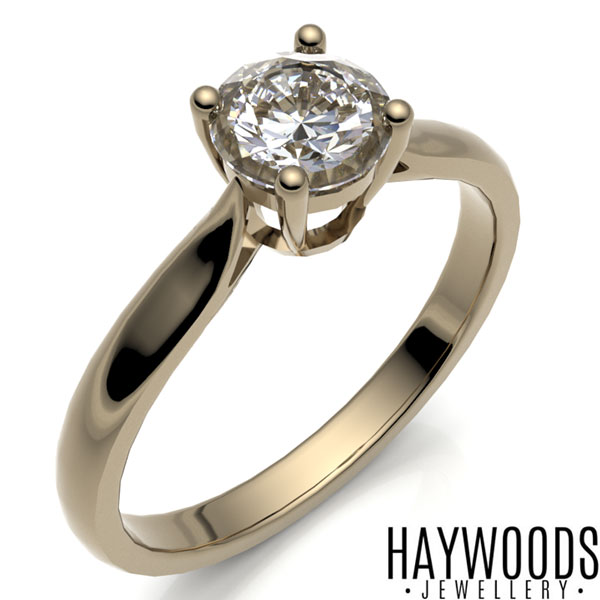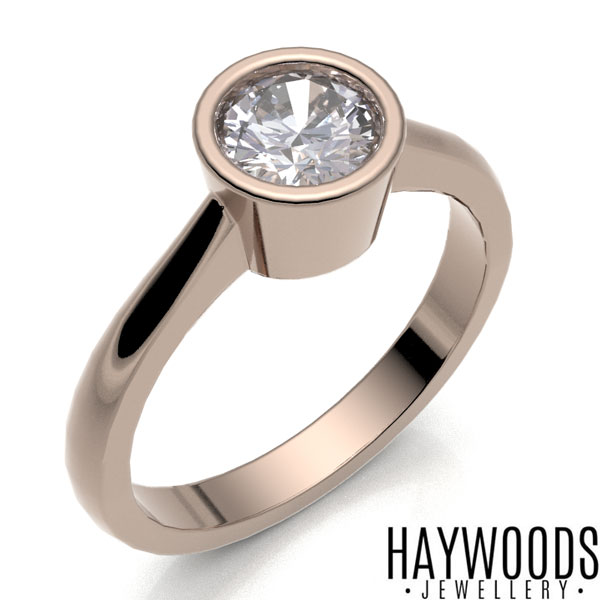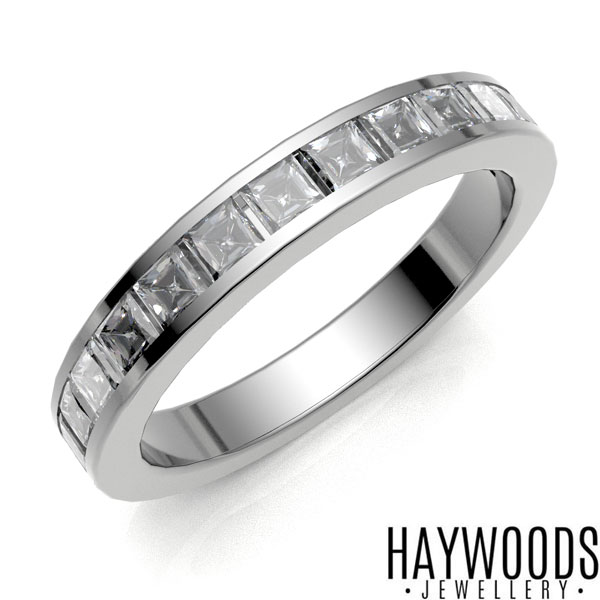If you are creating/designing/choosing a piece of jewellery, whether it is a ring, pendant or pair of earrings with a diamond or coloured gemstone, you need to choose the right type of setting.
That is why in this post, I have listed 10 of the most popular types and styles of settings that you can choose.
1) Claw/Prong Setting
Claw (they are called prongs in north America) setting is one of the most popular choice of setting. This is because the setting really helps to show off the stone as the open sides let light into the back of the stone and the claws do not cover much of the top of the stone.
There are also quite a few options when it comes to the design aspects. You can go for round or square claws or for stones with pointed corners (Princess, Pear etc), you can go for V shaped claws.
You can also change the amount of claws that you have on your setting, you could keep it traditional a go for a 4 claw, like the one pictured. Or you can go for a six, eight or ten+ claws, depending on the size and shape of the stone.
Claw setting are usually very durable when done properly and taken care of, however the claws can occasionally get caught on clothing which can cause the claws to bend. It is also worth having the claws re-tightened every few years to make sure that they are gripping the stone properly.
2) Bezel/Rub-over Setting
Bezel setting (sometimes called rub-over setting) are one of the most secure settings you can choose as the stone is held in place by metal that has been pushed over the stone.
Bezels also adds some more protection to the stone, which makes it a very good option for softer stones such as Emerald, Tanzanite and Opal.
This means that stones set using this method are far less likely to fall out but one of the downsides, is that due to the nature of the setting, not much light is let in under the stone which can make coloured gemstones look darker or diamonds look a bit lifeless.
A popular choice of setting style for cabochons, whether traditional or freeform cut but also a great choice for faceted gemstones and diamonds.
3) Trilogy Setting
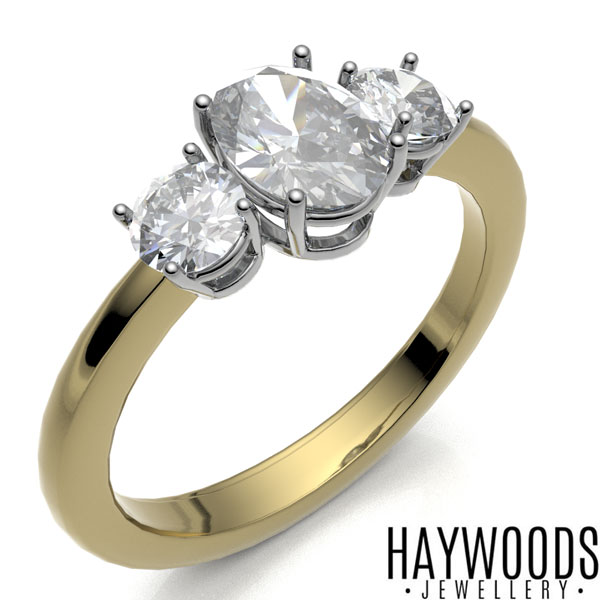
The trilogy setting is a very popular style of setting, especially for engagement rings. Just ask Meghan Markle!
This style of setting can be personalised in many different ways such as:
- Three stones of the same size and shape
- Three stone of different shapes
- Large centre stone with smaller outers of the same shape
- Large centre stone with different shape outers
This makes it much easier to have a custom piece as it all depends on the size, shape and type of stones you use in the piece.
When it comes to the actual type of setting that will be used, you can choose either of the two mentioned above and once again, you can mix and match to suit your taste. For example, you could have bezel set outer stones and a claw set centre one.
4) Cluster Setting
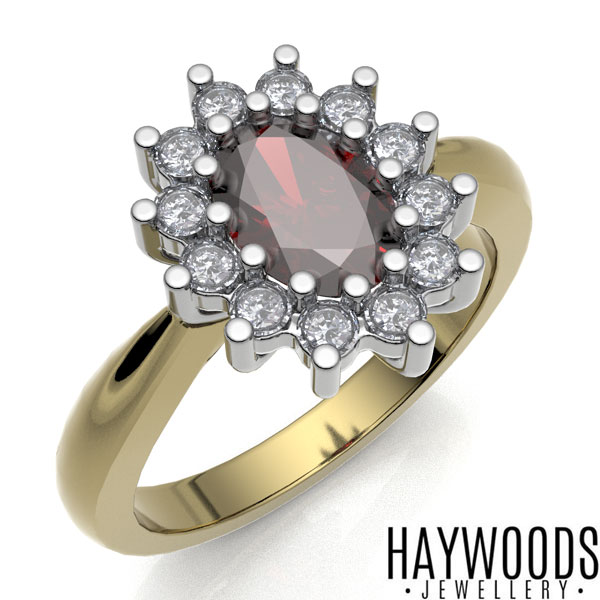
The cluster setting is a traditional and timeless style that was made very popular in the 1980’s and the late 2000’s as this was the style of engagement ring worn by Princess Diana and The Duchess of Cambridge.
The cluster style setting was one of the first styles of setting to use small diamonds to surround the centre stone, often the centre stone is much larger than the surrounding diamonds but you can also have all of the stones the same size.
This style of engagement ring is very popular with people who opt for a coloured gemstone such as a Ruby or Sapphire rather than a diamond as the main stone.
5) Halo Setting
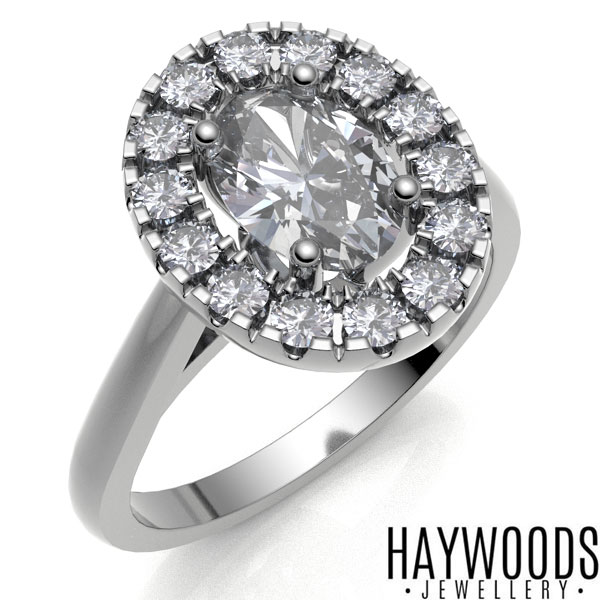
The halo style setting is a modern twist on the more traditional cluster setting. It is a very popular choice as you get a lot of sparkle for your money.
The stones that are set in the halo are usually smaller than those that are used in a cluster setting and that means that you get more of them, which makes the piece sparkle even more.
Halo settings are usually Pave set as this style lets a lot of light into the stone.
The halo setting is very popular with Round and Oval cut centre stones but can be done with pretty much any style of stone.
6) Channel Setting
Channel settings are the most popular choice for eternity rings, not only do they look great but they also offer a lot of protection to the small diamonds often used it eternity rings.
The stones a placed into a channel that has been cut out of the band before metal is pushed over the edges of the stones to hold them in place. As the stone are recessed into the ring, they do not suffer too much abuse on a daily basis. Channel setting mostly use Round Brilliant or Princess cut diamonds.
While this type of setting is often used on eternity rings, it can also be used to set accent stones on the shoulders of other styles of rings.
7) Pavé Setting
Pavé setting is a very popular way of setting small diamonds into jewellery and recently engagement rings. Pavé is a french word that means to cover and area, usually with stones and in jewellery this is often done with diamonds.
The stones are held in by very small prongs that are made when the seats for the diamonds are cut and many times the results look just like small claw settings.
8) Micro-pavé Setting
Micro-pavé setting is very similar to the pavé setting above, except it is done with very small stones, sometimes as small as 0.5mm. Micro-pavé is often done with rows of small diamonds so that it gives a very sparkly effect.
Due to the stones being so small, the amount of metal holding them in place in minuscule and I generally would not advise using this setting if you are planning to wear the ring everyday as the chances of losing a stone are quite high with this type of setting.
9) Flush/Gypsy Setting
Flush setting is very popular in mens rings and wedding as it gives a simple yet clean look. It is also a very secure setting as the stone is held in place by metal that has been pushed over the stone.
This type of setting became very popular after Cartier used it in their love range.
I hope this has given you a little bit of information on the types of setting that are used in your jewellery and that it will help you make a more informed decision as to what is right for you.
10) Tension Setting

Tension setting is a style that visually looks great as the stone appears to be floating in the piece but it does come with a warning.
A traditional tension setting keeps the stone in place just using the tension of the metal but over time, the metal starts to loose its memory and this can result in the stone falling out.
Many jewellers and designers have alleviated this somewhat by adding a connecting support bar between the two sides of the ring.
While stunning to look at, the practicality of this style of setting means that they aren’t great to wear on a day to day basis.
Conclusion
So there they are, 10 different types of stone setting styles. Due to the creative nature of jewellers and designers, it is not surprising that there have been many different modifications to these basic styles over the years but the basic principles still apply.
When it comes to choosing the style of setting for your ring or piece of jewellery, you do need to think about the practical aspects as well as how it looks. This is because certain styles will not be a viable option for you depending upon your career, hobbies or general day to day life.
If you having a piece of jewellery designed for you, always make sure that you discuss the practicalities with the designer so that they can give you the right advice.
I'm Paul Haywood FGA DGA, a fully qualified Gemmologist and Diamond Grader from the Gemmological Association of Great Britain and a lover of all things jewellery.
